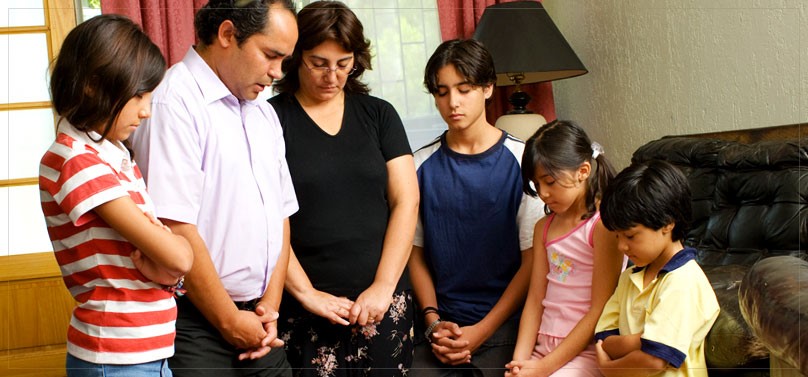THE FINE ART OF FAMILY
DECISION-MAKING,
Part Two
Successful families
have a wide assortment of tools available to them, and one of the most useful
tools is the family council.
M. Russell
Ballard

This is the second half of a two-part article focused on this
important question:
How can we improve the quality of family decisions, and do it in a
way that also improves the quality of family relationships?
In the first half of this article, I stated that in order to
properly address this question, we need to consider two important components of
a family's decision-making methodology, namely:
- the REGARD with which they treat each member of the group; and
- the PROCESS employed to reach decisions.
I outlined a model for fostering an environment in which the
family can communicate the love and respect with which they REGARD one another
and in which each person can do their best thinking. This is accomplished by
understanding and implementing Time to Think's "Ten Components of a Thinking Environment."
If you missed Part One or just want to review it, here is a link:
In the second half of this article, my focus is on a council,
which is the PROCESS that families (and other groups) can employ to reach
excellent group decisions.
What does a Council look like?
A Council is a relatively simple approach to group
decision-making, but there are a few guidelines that will make it flow
smoothly. While this outline may feel rather prescriptive, flexibility is a key
ingredient to a successful Council.
1. Participants are seated
comfortably around the room or around a table, so that everyone can see
everyone else.
2. The essential ingredients of a
Council are a question, a series of rounds, and generous attention.
3. All participants agree to give
undivided attention to the one speaking, taking care not to interrupt them or
cut them off. In return for receiving uninterrupted attention, the one speaking
agrees not to take too long.
4. A Council is a series of rounds.
A "round" is where people speak in turn, going around the circle,
allowing each to speak or to pass. The direction of each round in the series
may alternate, going clockwise, then counter-clockwise, then clockwise again.
5. By using a series of rounds,
everyone has an equal opportunity to address the topic, to express their
observations, thoughts, concerns, feelings, and experiences, and to share any
information available to them.
6. Before we start the Council, we
determine how we will come to a decision at the end of the Council. It may be
by majority vote, by consensus, or by the decision of the parents or leaders.
Fortunately, the Council format tends to move the group toward a decision
that's acceptable to all.
7. The initial round is usually a
"positive round," which is round initiated by posing a gentle
question that invites participants to share a positive observation. The
question may be something like "What's something you admire or appreciate
about our family?" or "What's been going well for you lately?"
or "What are you enjoying about this summer?" Once the opening
question is posed, the leader asks who wants to go first and indicates whether
the round will go around to the left or to the right.
8. In a Council, we address a
question that serves to focus our attention on the issue at hand. Because the
human mind thinks best in the presence of a question, the question draws the
best ideas from each person in the group. The question could be something like
"Where shall we go on vacation next summer?" or "How can we have
more cooperation in cleaning the house and keeping it clean?" or
"What guidelines shall we establish for cell phone usage as the children
become teenagers?"
9. The leader of the Council
usually brings the initial question to the group, along with sufficient
background information to help put the question into context. If needed,
participants may ask for clarifying information about the question. Based on
clarification, the question may be polished, refined, or restated.
10. Once the principal question is
clarified, the leader asks for a volunteer to speak first and indicates whether
the round will move to the left or to the right after the first person has spoken.
11. By focusing on answering the
question; we avoid wandering off into random topics.
12. Parents and other strong
leaders may need to be careful that they do not overwhelm the discussion or
inadvertently hijack the direction of the conversation. Make sure younger or
less forceful participants feel comfortable expressing themselves.
13. After a few rounds, we may open
the floor to a general discussion, before going back to additional rounds. Just
as in a round, during a discussion we pay attention to the one speaking and we
don't interrupt them or cut them off.
14. After a few rounds, we may
recognize the need to refine or updated the question.
15. As we near the end of the
Council, the leader may summarize what was discussed and may verbalize a
tentative conclusion, and then invite a comment round.
16. In my experience, this PROCESS
often results in a harmonious decision because participants feel they
understand the issue more fully and they have been heard. Many
times, the group's decision is obvious and unanimous. If it is not, the
agreed-upon decision-making method (i.e., majority vote, leader decides) can be
followed, or the group may agree to table the decision and get back together
later, perhaps after seeking additional information that was not available
during this meeting.
17. Before the closing round, the
group should discuss what next steps are needed after the meeting. Follow-up
assignments may be made and a plan of accountability may be implemented.
18. At the end of the Council, we
do a closing positive round using a question like, "What do you think went
well in our meeting today?" or "Going forward, what positive outcomes
do you see that might result from our discussion?"
This seemingly simple PROCESS can pay huge dividends in helping
families and other groups make better decisions and improve the quality of
their relationships.
By making each person around the circle an active and involved
participant, this approach helps to glean wisdom from sometimes unlikely sources.
It also encourages buy-in from each person and increases the likelihood they
will work together after the meeting to solve the issue.
A Simple Example
Many years ago, I read the following story in a magazine about a
family who used a family council to tackle a difficult challenge. It
illustrates how a council works and what can be accomplished with this process.
When I was in my early years of high school, we had some financial
problems. We suffered a year of severe drought followed by two or three more
dry years. Our crops were a total failure. At this same time, many of our crops
were infested with new insects. All the farms in the area were affected, and
many other farmers were having difficulties. Mortgage payments that had not
been met the previous years mounted and some farmers lost their homes.
As children we knew that we were experiencing financial problems,
but we did not realize the extent or the seriousness of them.
One evening in the spring, my father and mother called the family
together for a family council. We sensed the seriousness of it immediately. We
gathered in our front room, and Father took charge. Calling the family to
attention, he said that we were meeting about a very serious matter and asked
Mother to open with prayer. He then told us of our financial difficulties.
Father further explained how our income could not possibly meet
our needs. Before the family council meeting, our parents had met with the
banker who held the mortgage on our home and had worked out a plan whereby our
home could be saved from foreclosure. We would have to pay the interest payment
each month from our monthly milk checks until fall and then make a larger
payment when we harvested and sold our cash crop in November.
Mother and Father presented two options to us as a family. First,
we could let the bank take over our home, find some place to live, and continue
to run the farm. Second, we could meet these monthly interest obligations with
nothing left over for other family expenses. Through the summer we could not
buy clothing, we could spend no money on recreation and almost nothing on gas
for the car; in fact, it would be difficult to get food staples needed to
supplement our garden produce. Since the payment in the fall would leave us
again with no extra money, we would have to continue this tight economy for at
least a year, maybe more.
After presenting our problem, Father asked each of us to express
our thoughts. He wanted us to be part of the decision making. Each of us in our
turn answered that we would like to save our home, and we all pledged ourselves
to sacrifice our wants; even the smallest children said they would not ask for
anything that was not absolutely necessary. Mother and Father said that they
wanted the same thing that we wanted, and with tears in their eyes thanked us
for being such good, cooperative children, and also thanked us for the hard
work that we had done on the farm.
After the decision was made, we all knelt together and Father said
a prayer. He thanked the Lord for our many blessings and asked His help in
carrying out the plans we had made that evening. We felt that the Lord would
indeed help us if we would do our part. That night our love for each other was
surpassed only by our love for our Heavenly Father. I had a lump in my throat
that would not go away as I prayed fervently for help in carrying out my part
in the plans that we had set.
In the following years and through the Great Depression, as we
struggled to get an education, to serve our church, to maintain our ideals and
our standard of living, I had many occasions to reflect upon that family
council and the tremendous impact for good that it had upon me. I accepted the
difficult times with the assurance that our entire family was working together
toward a common goal-and we were succeeding. Thora B. Watson, The Meeting That Saved Our Home,
Ensign Magazine, February 1985.

Over the years and in a variety of professional, church, and
family settings, I have found the Council to be a wonderful process for making
group decisions regarding difficult issues, and for strengthening the
relationships within the group. As I mentioned in the previous Wednesday
Wisdom, I believe the principles discussed here are applicable to groups in
business, education, government, social clubs, churches, and other areas of
human life, and especially in family decision-making.
* * *
"Successful families have a wide assortment of tools
available to them, and one of the most useful tools is the family council. In a
family council we talk about the needs of the family and the needs of individual
members of the family. It is a time to solve problems, make family decisions,
and plan day-to-day and long-range family activities and goals. It is a time to
share one another's burdens and joys and to counsel together." M. Russell Ballard


